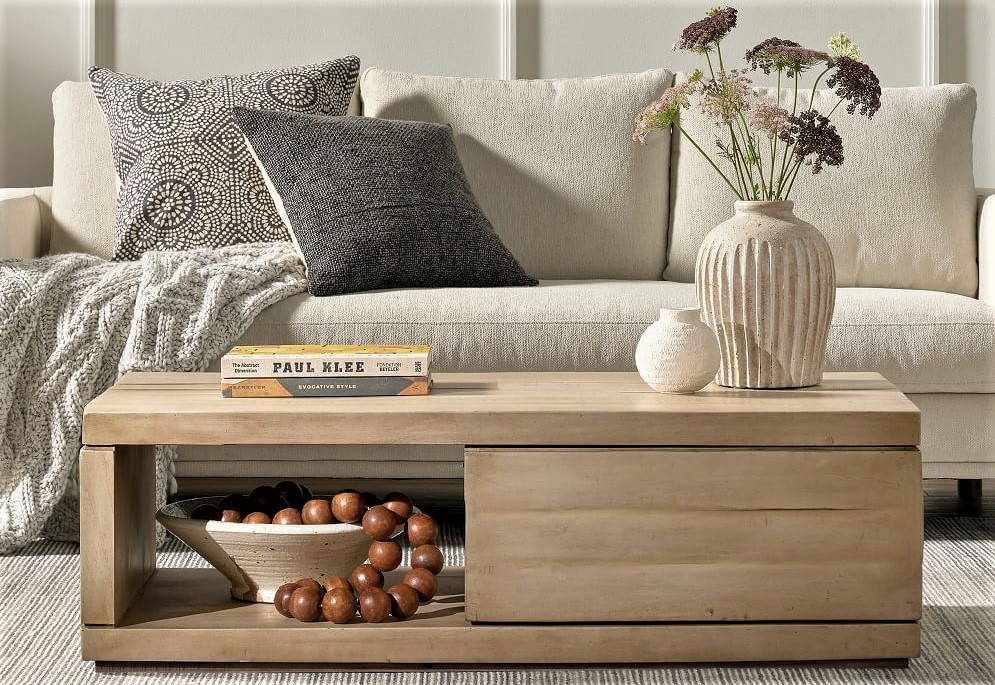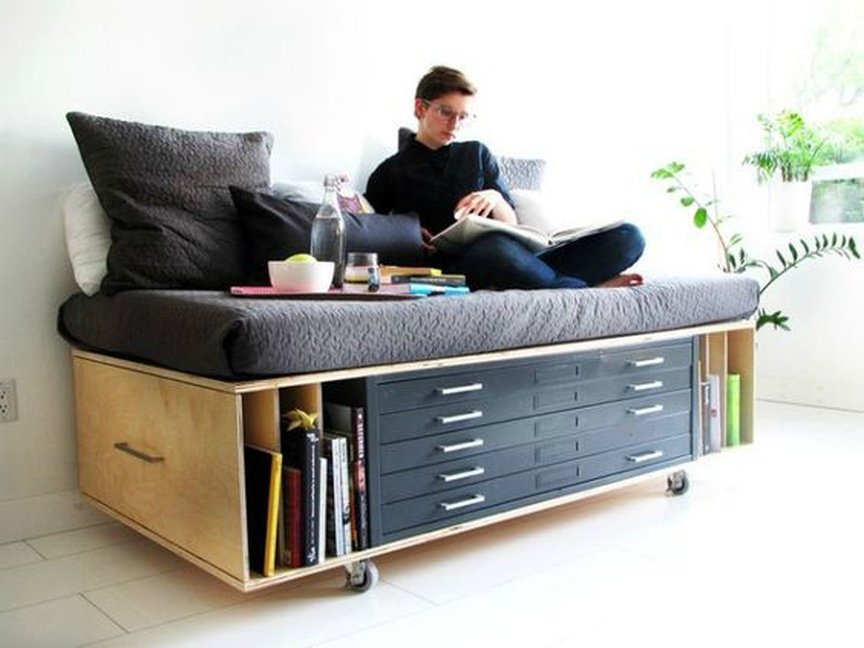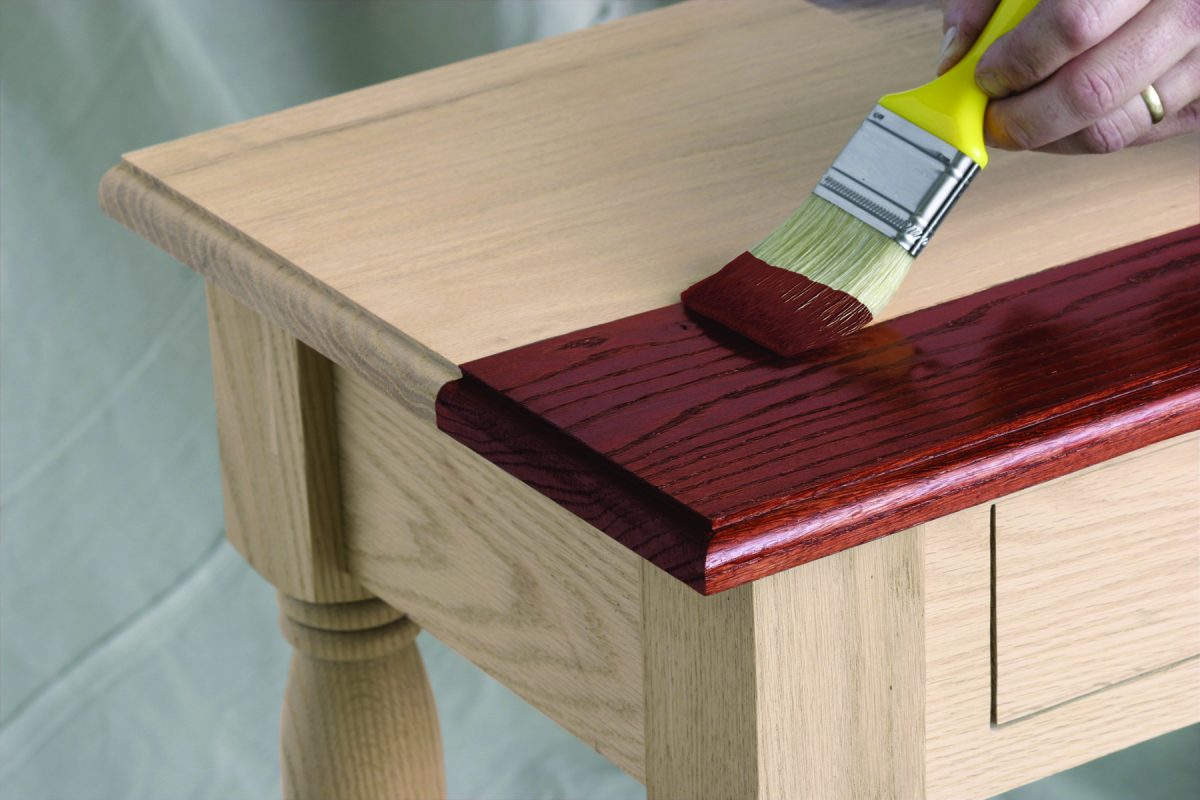I never waste good fabric
Every sewing enthusiast knows the pain of having a pile of unused fabrics that are too precious to throw away. These remnants and forgotten treasures hold stories of their own, waiting to be told through imaginative reinvention. In a world that values sustainability and creativity, it is time to unlock the hidden potential of these fabrics and breathe new life into them.
This article explores the art of repurposing and upcycling textiles, providing a plethora of inspiring ideas to transform forgotten fabrics into remarkable creations. Discover ways to give old garments a fresh lease on life, repurpose outdated curtains into fashionable accessories, or even breathe new life into vintage linens by incorporating them into contemporary home decor.
Embracing the spirit of sustainability, these innovative techniques not only help us reduce waste but also enable us to express our individuality and creativity. By exploring unconventional methods of repurposing textiles, we can turn ordinary materials into extraordinary works of art.
Join us on a journey of exploration and creativity as we delve into the realm of fabric upcycling and discover the endless possibilities that await. Whether you are a seasoned stitcher or a novice crafter, there is something for everyone in this collection of ideas and inspiration.
From Old Shirts to Stylish Bags: Transforming Your Wardrobe
Revamping your wardrobe doesn’t always mean splurging on new clothes. With a bit of creativity and a few simple steps, you can transform old shirts into fabulous bags that add a unique touch to your outfit. This sustainable and budget-friendly approach not only reduces waste but also allows you to express your personal style through upcycling.
Repurposing Shirts into Chic Tote Bags
If you have a collection of shirts that have seen better days or no longer fit, don’t toss them out just yet. By cutting and sewing strategic sections, you can turn them into trendy tote bags that are perfect for carrying your essentials. The variety of colors, patterns, and textures in shirts provide endless possibilities for creating one-of-a-kind bags that reflect your individuality.
Start by selecting a shirt that you no longer wear but still adore. Look for interesting elements like buttons, pockets, or unique patterns that can become design features of your bag. Carefully cut the sleeves and collar off, leaving the body of the shirt intact. Depending on the desired size of the bag, you may need to trim the sides as well.
Next, fold the shirt in half, aligning the bottom edges. Sew along the sides, leaving the top open, to create the basic structure of the bag. You can reinforce the seams to ensure durability. To add flair, consider using contrasting thread or decorative stitches. Once you have completed the sewing process, turn the bag inside out to give it a neat and finished appearance. Your chic tote bag is now ready to accompany you on your stylish adventures.
Customizing Shirts into Crossbody Purses
If you prefer smaller bags for a hands-free experience, transforming a shirt into a crossbody purse is the way to go. This versatile accessory keeps your essentials close while allowing you to move freely and comfortably. By repurposing shirts, you can create eye-catching crossbody purses that perfectly match your personal taste.
Begin by cutting off the sleeves and collar of the shirt, just like in the previous method. However, instead of sewing the sides, fold the shirt in half vertically and sew along the bottom and one side, leaving the other side open. This creates a pouch-like structure for your crossbody purse. To ensure security, you can attach a zipper or add a button closure.
For the strap, you can either use an existing strap from another bag or create one using the excess fabric from the shirt. Simply cut a long strip of fabric, fold it in half lengthwise, and sew along the edges. Attach the strap to the sides of the purse, and your unique crossbody purse is complete.
By reimagining the potential of old shirts, you can transform your wardrobe in an environmentally-friendly and stylish way. With a little imagination and some basic sewing skills, you’ll be able to create fashion-forward bags that make a statement while reducing waste. So, why waste good fashion when you can upcycle and upgrade your wardrobe?
Patchwork Paradise: Bringing New Life to Tattered Fabrics
Discover the art of creating a patchwork paradise, where worn-out and torn fabrics find new purpose and become vibrant works of art. In this section, we will explore innovative ways to repurpose and revitalize tattered fabrics, transforming them into unique pieces that showcase the beauty of imperfection.
Embracing the philosophy of sustainability, patchwork offers a sustainable solution to reduce textile waste and extend the lifespan of fabrics. By combining various remnants, scraps, and damaged textiles, patchwork allows us to create one-of-a-kind items that are not only visually stunning but also environmentally conscious.
Through the use of different techniques such as appliqué, quilting, and embroidery, patchwork provides endless possibilities for expressing creativity and individuality. Whether you’re a seasoned quilter or a beginner with a flair for DIY projects, patchwork opens up a world of artistic expression for every skill level.
- Learn how to mend and reinforce damaged fabrics using patchwork, adding strength and durability to once-tattered materials.
- Discover the art of color and pattern coordination, as you mix and match different fabrics to create visually striking compositions.
- Explore unique patchwork techniques such as crazy quilting or improvisational piecing, allowing for spontaneous and organic designs.
- Find inspiration in the rich history of patchwork, from traditional patterns and motifs to contemporary interpretations.
- Unleash your imagination with small-scale patchwork projects, such as pouches, coasters, or even decorative wall hangings.
Join us on this journey to create a patchwork paradise, where worn fabrics are given a new lease on life, and the beauty of imperfections is celebrated. Get ready to immerse yourself in the world of patchwork and let your creativity soar!
Quilting Masterpieces: Unleashing your Creativity with Scraps
Discovering limitless artistic possibilities while making the most of leftover materials
When it comes to quilting, the potential for creating captivating masterpieces stretches far beyond the boundaries of traditional designs and pristine fabrics. In fact, some of the most remarkable quilts emerge from the ingenious use of scraps. Unleashing your creativity with these seemingly insignificant remnants allows you to breathe new life into discarded fabrics, giving rise to unique quilting compositions that exude originality and charm.
The art of quilting has long embraced the concept of repurposing, transforming remnants into beautiful patchwork creations. By harnessing the power of scraps, you not only contribute to sustainable practices but also unveil your own artistic ingenuity. With the right mindset, a humble pile of fabric leftovers can become a playground for your imagination, offering endless opportunities for captivating color combinations, intricate patterns, and texture explorations.
The versatility of scraps allows you to experiment with different quilting techniques, such as appliqué and paper piecing, to add depth and visual interest to your designs. Layering various pieces together creates captivating contrasts, enabling you to tell a unique story through your quilts. Whether you opt for a more traditional or contemporary approach, the use of scraps can infuse your quilting journey with a sense of adventure and endless possibilities.
| Benefits of Quilting with Scraps: |
| 1. Sustainable practices and reducing fabric waste |
| 2. Exploring unconventional color palettes and pattern combinations |
| 3. Creating one-of-a-kind quilts that reflect your personal style |
| 4. Challenging yourself creatively and expanding your quilting skills |
| 5. Embracing the imperfections and unique characteristics of each fabric scrap |
Quilting with scraps is not only a sustainable practice but also an opportunity to push the boundaries of your own creativity. Every discarded piece of fabric holds the potential to become a vital component in your magnificent quilting masterpiece, showcasing your resourcefulness and skill. So, don’t let those scraps go to waste – transform them into something extraordinary that speaks to your artistic soul.
Repurposing Furniture with Fabric: Reviving and Transforming Old Pieces
In this section, we will explore the art of repurposing furniture with fabric to give a fresh and renewed look to old pieces. Instead of discarding worn-out or outdated furniture, why not breathe new life into them by incorporating fabric into their design? This creative process allows you to craft one-of-a-kind pieces that showcase your personal style while minimizing waste.
Revitalizing Old Chairs
One popular way to repurpose furniture with fabric is by revitalizing old chairs. Whether they are antique finds from a thrift store or worn-out dining chairs, you can transform them into stylish and comfortable seating options. Begin by removing any old upholstery or cushioning, revealing the chair’s structure. Choose a durable and visually appealing fabric that enhances your desired aesthetic. A vibrant pattern can add a pop of color to a neutral space, while a luxurious texture can elevate a minimalist interior. With some basic sewing skills and upholstery techniques, you can create custom chair covers that fit perfectly and instantly upgrade the overall appearance.
Creating Fabric-Paneled Headboards
Another way to repurpose furniture using fabric is by creating fabric-paneled headboards. This DIY project allows you to turn a plain or outdated headboard into a focal point of your bedroom. By adding fabric panels to the front of the headboard, you can introduce texture, pattern, and even additional functionality. Consider using bold and contrasting fabrics to make a statement. If you prefer a more subtle look, choose a fabric that complements the existing color palette in your bedroom. This revamped headboard will not only breathe new life into your space but also provide a cozy backdrop for your bed.
| BENEFITS OF REPURPOSING FURNITURE WITH FABRIC: |
|---|
| 1. Sustainable solution to minimize waste |
| 2. Opportunity to showcase your personal style |
| 3. Cost-effective way to upgrade your home decor |
| 4. Ability to customize furniture to fit your space |
| 5. Allows for experimentation with different fabrics and patterns |
By repurposing furniture with fabric, you can unleash your creativity, breathe new life into old pieces, and contribute to a more sustainable approach to home design. Whether it’s transforming chairs or revamping headboards, this process allows you to create unique and stylish pieces that reflect your personality and give your home a fresh, updated look.
Upcycled Home Decor: Inspiring Ideas for Fabric-based Crafts
Revitalize your home with unique and eco-friendly fabric-based crafts that breathe new life into old and discarded fabrics. Discover a world of endless possibilities as you explore the art of upcycling and transform your living space into a haven of creativity and sustainability.
1. Repurposed Pillow Covers
Add a touch of individuality to your home by repurposing old fabrics into one-of-a-kind pillow covers. Whether it’s a vintage tea towel, a piece of beautifully patterned clothing, or scraps from previous sewing projects, these fabrics can be transformed into stunning accents for your living room or bedroom. Sewing or gluing together different fabrics, experimenting with textures and colors, and adding embellishments can result in unique and eye-catching pillow covers that effortlessly add character to your space.
2. Statement Wall Hangings
Create stunning focal points for your walls by upcycling fabric into exquisite wall hangings. Use fabric scraps, ribbons, lace, and other decorative materials to create intricate designs that reflect your personal style. From macrame tapestries to fabric collages, the possibilities are endless. These fabric-based artworks not only add visual interest to your walls but also serve as a great way to display your creativity and love for sustainable living.
- Combine different fabric patterns and textures to create a visually striking wall hanging.
- Experiment with different shapes and sizes, such as circular or triangular designs, to add a modern touch.
- Add tassels, beads, or shells to create a bohemian-inspired piece of art.
3. Upcycled Fabric Planters
Breathe life into your indoor plants by upcycling fabric into unique and eco-friendly planters. Old denim jeans, colorful scarves, or even vintage tablecloths can be transformed into beautiful and functional containers for your houseplants. Simple sewing techniques can turn fabric into stylish planters that add a touch of charm and whimsy to your home.
- Choose fabrics that complement your plants and the overall aesthetic of your home.
- Consider adding a waterproof lining or coating to protect the fabric from moisture.
- Experiment with different shapes and sizes, such as hanging planters or fabric-wrapped pots, to create variety.
Embrace the art of upcycling and elevate your home decor with these inspiring fabric-based crafts. By repurposing old fabrics, you not only reduce waste but also infuse your living space with a sense of creativity, uniqueness, and sustainability. Get ready to transform your home into a haven of upcycled beauty!
Eco-friendly Fashion: Reducing Waste by Remixing your Closet
In the realm of sustainable fashion, a key aspect lies in minimizing waste and finding innovative ways to repurpose our existing clothing. In this section, we will explore the concept of eco-friendly fashion through the transformative power of remixing your closet. By reimagining and combining your garments, you can create stylish and unique outfits while significantly reducing your ecological footprint.
One of the main advantages of remixing your closet is the ability to extend the lifespan of your clothing. Instead of buying new items, you can utilize what you already have and give them a fresh twist. By mixing and matching different pieces, you can create outfits that reflect your personal style and showcase your creativity without contributing to the demand for new clothing production.
- Combine different textures: Mixing fabrics with distinct textures can add depth and visual interest to your outfits. Try pairing a chunky knit sweater with a flowy silk skirt or a leather jacket with a delicate lace top.
- Layering is key: Layering allows you to experiment with different garments, creating new looks each time. Consider combining a dress with a turtleneck, or wearing a blouse underneath a jumpsuit to add versatility to your wardrobe.
-
Accessorize creatively: Accessories can significantly change the vibe of an outfit. Experiment with belts, scarves, hats, and statement jewelry to transform the overall look and feel of your ensemble.
- Repurposing and upcycling: Don’t be afraid to get crafty! Transform old t-shirts into trendy crop tops, convert trousers into shorts, or use extra fabric to create unique patches or embellishments for your clothing.
By embracing the concept of remixing and repurposing our clothing, we can play an active role in reducing waste and ensuring a more sustainable fashion industry. Remember, your closet is a treasure trove of endless possibilities, waiting to be explored and transformed into eco-friendly fashion statements!
Questions and answers: I never waste good fabric
What does “zero waste” mean?
“Zero waste” refers to a lifestyle or approach aimed at minimizing waste generation and reducing environmental impact as much as possible.
How does recycling contribute to achieving zero waste?
Recycling involves converting waste materials into reusable products, thereby diverting them from landfills and reducing the overall waste footprint.
What happens to waste in a landfill?
Waste deposited in landfills undergoes decomposition, which produces methane, a potent greenhouse gas. Landfills contribute to environmental pollution and can pose risks to public health if not managed properly.
Why is zero waste important for environmental sustainability?
Zero waste practices promote resource conservation, reduce pollution, and minimize the reliance on finite natural resources, contributing to long-term environmental sustainability.
What is zero waste sewing?
Zero waste sewing is a sustainable approach to sewing that aims to minimize or eliminate the waste of fabric during the design and production process.
Why is wasting fabric a concern in the fashion industry?
Wasting fabric contributes to environmental degradation and resource depletion. Fabric scraps and unused materials often end up in landfills, exacerbating waste management issues.
How do zero waste patterns contribute to waste reduction?
Zero waste patterns are designed to utilize fabric efficiently, minimizing or eliminating scraps and offcuts. By using these patterns, sewists can significantly reduce fabric waste.
What is deadstock fabric, and how does it relate to zero waste sewing?
Deadstock fabric refers to excess fabric leftover from textile production or unused inventory from fashion brands. By repurposing deadstock fabric in zero waste sewing projects, makers can reduce waste and environmental impact.
How does the textile industry contribute to waste problems?
The textile industry is notorious for overproduction and waste. Millions of tons of textiles end up in landfills each year, highlighting the urgent need for waste reduction measures.
Why is a zero waste approach considered environmentally responsible?
A zero waste approach minimizes environmental impact by reducing the amount of waste sent to landfills, conserving resources, and promoting sustainable practices throughout the supply chain.
What are some techniques for avoiding waste fabric in sewing?
Sewists can avoid waste fabric by using every scrap efficiently, repurposing offcuts, and utilizing zero waste patterns designed to minimize fabric waste.
How do thrift shops and used clothing contribute to waste reduction in the fashion industry?
Thrift shops and used clothing provide avenues for extending the life of garments, reducing the demand for new textiles, and diverting clothing from landfills.
What role do natural fibers play in zero waste sewing?
Natural fibers, such as cotton and linen, are preferred in zero waste sewing for their ability to decompose naturally, minimizing environmental impact at the end of a garment’s life cycle.
How can circularity principles be applied to fashion design?
Circularity principles advocate for creating sustainable fashion systems where materials are continuously reused, recycled, or repurposed to minimize waste and promote environmental sustainability.




